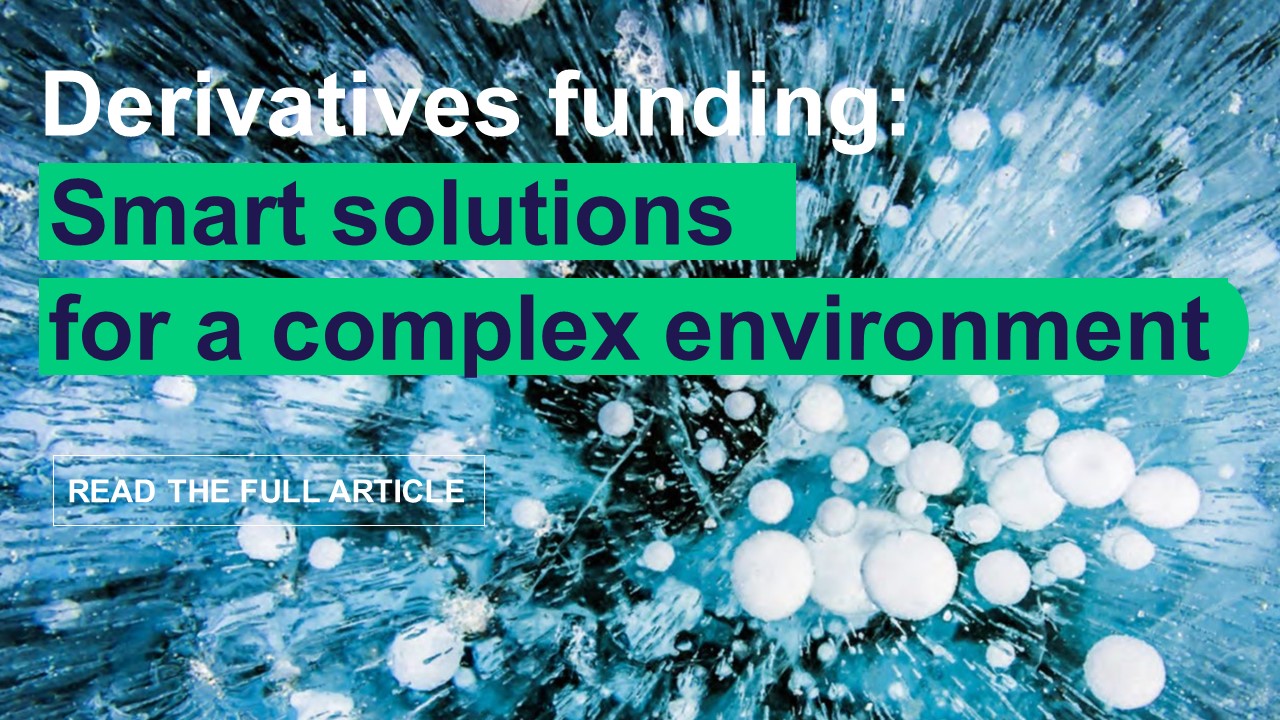Institutional investors play a key role in directing capital towards initiatives that support the energy transition. Eurex caught up with Claire Coustar, Global Head of ESG and Sustainable Finance, IB-FIC at Deutsche Bank, about the growth of sustainability-linked bonds, carbon markets and the challenges on the path to net zero.
Where are you seeing the most growth today in the green bond market?
The part of the ESG market that has had the most attention over the past year and the highest growth in volume is in sustainability-linked-bonds and loans. This trend began early last year in the high grade European corporate sector and continued to grow in the high yield corporates in the bond and loan market and finally, in March of 2022, we saw Chile became the first sovereign to issue a sustainability-linked bond.
Proceeds from sustainability-linked bonds are not directly tied to specific sustainable initiatives but instead the issuer commits to ESG targets in the future that they will work towards. Sustainability-linked bonds require a clearly prepared transition plan by the counterparty articulating how they intend to achieve these targets. Typically, the interest rate paid will vary up or down depending on whether these targets are reached.
It is interesting that sustainability-linked bonds grow as it links back to what investors and banks are currently doing in terms of steering their investment portfolios towards net zero commitments. Most banks and many institutional investors have committed to net zero goals under the Net Zero Alliance and now need to set forward carbon emissions targets for their lending and investing activities.
To do this, you need a good sense of what the carbon characteristics of your portfolio will look like in the future. That is a significant challenge as it involves forward looking data. Today the data in the ESG market comes in a multitude of different shapes and sizes in terms of what and how a corporate discloses its exposures.
Sustainability-linked bonds are central to overcoming this issue as they give investors a good sense of where the issuer is heading, enables them to monitor progress through the bond reporting obligations, and can link back to investments in some of the benchmark key indices such as the EU decarbonization or climate transition benchmarks.
How are investors changing their approach to ESG as the market matures?
We are seeing a much more impact driven, engagement-style approach and this is really needed when we talk about supporting the Transition. So as it relates to investing in sustainability-linked bonds, these instruments provide the tool to measure ESG impact through disclosure and reporting against future targets. At some stage we may see the market mature to treat these ESG targets more akin to financial covenants where the consequences of a breach could trigger an event of default. With each new round of financing, we see investors looking to increasing the level of ambition on ESG targets, whether it be the actual performance target or the breadth of ESG KPIs committed to by the issuer.
With that move further into impact investing comes a desire from investors to expand beyond the traditional, broad use-of-proceed themes like financing renewables. For example, with regards to the energy transition, investors want to see use-of-proceeds bonds that go towards the downstream impact of what you need to spend to get the electricity grid stable – i.e. batteries, grid upgrades etc. Another example is in real estate where investors are looking at the cost of retrofitting space. I expect this trend towards a broadening view on use-of-proceeds to continue, especially as relates to social to focus on the different aspect of social financial inclusion and just transition.
This is also reflected in the product mix that investors are looking for in terms of indices and ETFs. Instead of constructing an index based on exclusions of specific sectors or ESG ratings, more and more clients are looking at investment products that focus on impact – transition, decarbonization, biodiversity. For example, they are looking for products that reflect transition leaders and laggards in terms of who has set targets and how those targets map to established methodologies and climate scenarios.
What greater role can exchanges play?
The more instruments that are issued, the more data can be captured and the easier it is for investors to have a clear view on the trajectory and characteristics of their portfolio.
Eurex has a range of reporting offerings for its clients showing things like carbon footprint and temperature alignment of portfolios. As more clients report data it be great to see how exchanges could offer machine readable access to this information for their clients, collateral tagging will also plan an important role as more and more investment product and lending product rely on the ESG nature of the underlying collateral to support the investment. Carbon markets, both regulated and the voluntary markets will require the support of exchanges to establish standardization. Exchanges also offer a central role in hosting clearing and trading of ESG indices, ETF spot futures etc.
How are the carbon markets evolving?
Carbon markets are a really interesting area right now and we are seeing a lot of growth in carbon markets and compliance markets in particular in the EU ETS markets. Prices are going up consistently because of the increasing ambition of the EU accelerating its decarbonization targets. These ambitions are benefitting EU ETS markets in terms of price and liquidity and the EU ETS market is now by far the largest carbon market globally.
We are seeing an uptick in trading activity and growing interest in carbon markets from investors locking in the positive term structure but also with corporate issuers risk managing their carbon emissions exposure.
Eurex is doing a lot of work with stakeholders in the set-up of voluntary carbon markets where there is a need to standardize and map contract characteristics to support the uptake in trading activity. There is also a lot of ongoing activity to build the framework around the voluntary carbon market in areas like the standardization of contracts and building the integrity of the market through things like verification and registration standards and the expiry of carbon credits once they have been used.
This is being done by the Voluntary Carbon Market Integrity Initiative, the Integrity Council for the Voluntary Carbon markets, the IETA, ISDA and many other industry associations but the implementation of these initiatives and the market itself requires venues where investors can trade. I expect to see rapid developments here once there is a defined legal contract specification and core principles framework developed.
What challenges are you seeing with regards to the development of the EU Taxonomy?
The main challenge for financial institutions is how the taxonomy ties in with other regulations, such as banks’ Pillar 3 disclosures and reporting requirements that are coming in from the end of this year. These tie back to the taxonomy and raises questions over whether investments and balance sheets are eligible or aligned with the EU taxonomy.
Calculating this eligibility will be driven by the data that firms have on their lending positions and getting that data is a big challenge. For example, if you are lending to real estate companies you need to capture the right energy efficiency information. For many banks this is not necessarily information that they have readily available. This is where it would be great to see more engagement with government bodies and regulators in supporting banks and investors with this type of information and putting the right regulations in place for corporate disclosure in support.
How is Deutsche Bank helping clients to meet their ESG mandates?
As a bank our biggest focus currently is working with our clients on their path to net zero and what needs to be achieved to be credibly and firmly on that path. Sometimes, especially with SMEs who are less resourced to prepare for the upcoming shifts in economic activity and reporting, this can be a long engagement process. This involves getting the right financial information from a climate perspective such as carbon emissions and the cost of carbon for your business and investment plans.
We are working with clients with differing degrees of sophistication and understanding in terms of their carbon footprint. This needs to be understood in terms of direct impact but also across supply chains for scope three information. This data needs to integrate with the IEA and IPCC models, which is essential as institutions providing capital are steering their investments along those pathways.
Our focus is helping clients understand what is happening in the market and what they are expected to deliver in terms of information now and in the future on their transition.


